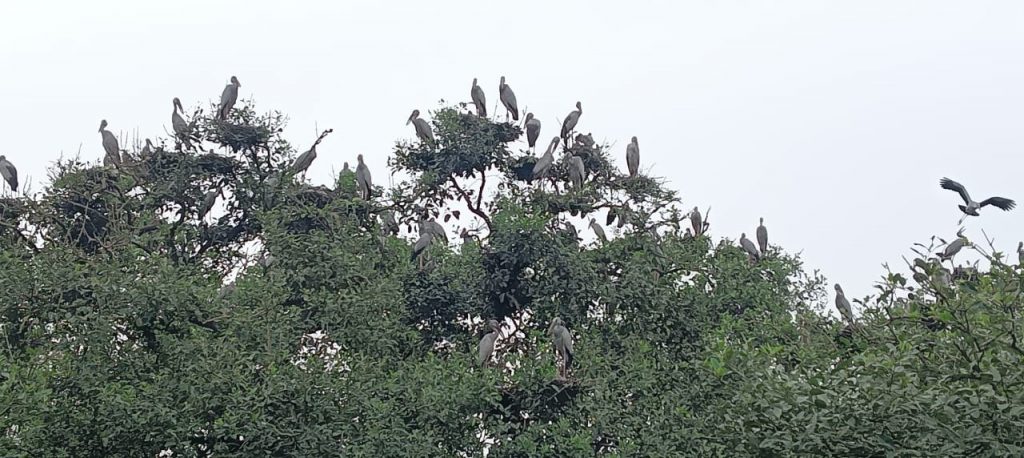Rajnagar: Bhitarkanika National Park in Kendrapara district has reestablished itself as a congenial habitat of resident water birds, maintaining a stable nesting population of winged species, a senior official said Tuesday.
Official statistics of the annual colonial bird census released Tuesday pegged their population at 1,30,796 belonging to 10 species. With this, the population of monsoon birds has increased marginally this year as compared to 1,30,123 birds sighted in 2024. “The consistent presence of diverse water bird species underlines the ecological importance of Bhitarkanika Mangroves as one of the largest heronries in Asia.
The annual nesting congregation not only enhances the ecological richness of the mangrove ecosystem but also provides critical insights into the conservation status of colonial water birds,” said Divisional Forest Officer (DFO), Rajnagar Mangrove Wildlife Division, Varadaraj Gaonkar. “Mangrove Wildlife Division, Rajnagar, remains committed to ensuring the protection of wetland habitats and safeguarding the future of these avian species,” said the DFO. The census team monitored all the waterbodies and mangrove forest areas of Mathadia, Laxmiprasaddia, Durgaprasaddia and Balidia heronries in and around Bhitarkanika National Park.
Also Read: Eight-feet-long Indian rock python rescued from Odisha village
The Asian Open-billed Stork continued to dominate the nesting colonies, with 15,919 nests, making it the most abundant species in the region. Other significant species include Black-headed Ibis, Purple Heron, Large Egret, Intermediate Egret, Little Egret, Grey Heron, Little Cormorant, Black-crowned Night Heron, and Darter.
Among the heronry sites, Laxmiprasaddia, having 13,594 nests and Mathadia, 13,261 nests, emerged as the major nesting hubs, contributing to the bulk of the nesting bird population. The preferred nesting tree species are: Bani (Avicennia officinalis), along with Guan, Kerauan, Oruan, Sinduka, and Sundari. Abundant fish in the river and creeks, and distance from human habitation, have made it a congenial breeding spot for thousands of birds.
Lack of human interference also comes in handy for birds as these winged species make and mend nests, collect green branches for building and repairing nests, lay, incubate, and hatch eggs, feed fledglings, guard them from predators without any obstructions, said the Forest officer. Noted ornithologist Salim Ali made a chance discovery of the Bhitarkanika birds’ habitat during a casual visit to Bhitarkanika in 1981.
